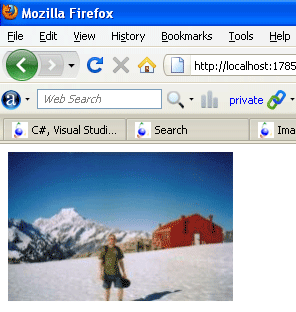An image-map is an image with clickable areas. The <map> tag is supported in all major browsers. An image map is one image with multiple "clickable" areas. Attributes consist of a name and a value separated by an equals (=) sign, with the value surrounded by double quotes. This attribute is associated with the <img>'s usemap attribute and creates a relationship between the image and the map.
Image
First of all, you need a suitable graphic. An image that cannot be divided in different sections is not your best choice, but an image that has clear cut-offs or lines would be better. Of course, this does not apply to navigational menus or similar, just to everyday pictures like animals, objects or people.
Co-ordinates
You'll need different co-ordinates depending on what sort of "hot spot" you'd like to use.
Hot Spot
Now that you've got your image and co-ordinates. There are three different shapes (commonly termed "hot spots") that can be used in image maps. They are as follows:
-RECT
-CIRCLE
-POLYGON
Attributes
HTML tags can contain one or more attributes. Attributes are added to a tag to provide the browser with more information about how the tag should appear or behave. Attributes consist of a name and a value separated by an equals (=) sign, with the value surrounded by double quotes.
There are 3 kinds of attributes that you can add to your HTML tags: Element-specific, global, and event handler content attributes.
Element-Specific Attributes
The following table shows the attributes that are specific to this tag/element.
| Attributes Introduced by HTML5 |
| Attributes |
Description |
| name |
Assigns a name to the image map. |
Global Attributes
The following attributes are standard across all HTML 5 tags.
|
HTML5 Global Attributes |
| accesskey |
draggable |
style |
| class |
hidden |
tabindex |
| dir |
spellcheck |
|
| contenteditable |
id |
title |
| contextmenu |
lang |
|
Event Handler Content Attributes
Here are the standard HTML 5 event handler content attributes.
| onabort |
onerror* |
onmousewheel |
| onblur* |
onfocus* |
onpause |
| oncanplay |
onformchange |
onplay |
| oncanplaythrough |
onforminput |
onplaying |
| onchange |
oninput |
onprogress |
| onclick |
oninvalid |
onratechange |
| oncontextmenu |
onkeydown |
onreadystatechange |
| ondblclick |
onkeypress |
onscroll |
| ondrag |
onkeyup |
onseeked |
| ondragend |
onload* |
onseeking |
| ondragenter |
onloadeddata |
onselect |
| ondragleave |
onloadedmetadata |
onshow |
| ondragover |
onloadstart |
onstalled |
| ondragstart |
onmousedown |
onsubmit |
| ondrop |
onmousemove |
onsuspend |
| ondurationchange |
onmouseout |
ontimeupdate |
| onemptied |
onmouseover |
onvolumechange |
| onended |
onmouseup |
onwaiting |
<area> Tag
The HTML <area> tag is used for defining an area in an image map. Image maps are images with clickable areas (sometimes referred to as "hotspots") that usually link to another page.
alt - Alternate text. This specifies text to be used in case the browser/user agent can't render the image.
coords - Specifies the coordinates of the clickable area. Coordinates are specified as follows:
rect: left, top, right, bottom
circle: center-x, center-y, radius
poly: x1, y1, x2, y2, ...
shape - Defines a shape for the clickable area. Possible values:default
rect
circle
poly
href - Specifies the URL of a page or the name of the anchor that the link goes to.
target - Specifies the target frame to load the page into.
For example
<!DOCTYPE html>
<html>
<head>
<title>Image Map</title>
</head>
<body>
<img src ="image1.gif"
width="225" height="151" border="0"
alt="Mueller Hut, Mount Cook, and I"
usemap ="#muellermap" />
<map id ="muellermap"
name="muellermap">
<area shape ="rect" coords ="90,80,120,151"
href ="http://c-sharpcorner.com;"
alt="Me" />
<area shape ="poly" coords ="55,55,120,80,90,80,90,100,70,100,20,80,55,55"
href ="http://vbdotnetheaven.com" target="_blank"
alt="Mount Cook" />
<area shape ="poly" coords ="145,80,145,100,215,90,215,80,180,60,145,80"
href ="http://dbtalks.com" target="_blank"
alt="Mueller Hut" />
</map>
</body>
</html>
Internet Explorer

Figure1
Now move the mouse over the image and click on a different area of the image. Now click on the men area.

Figure2
Fire Fox

Figure3